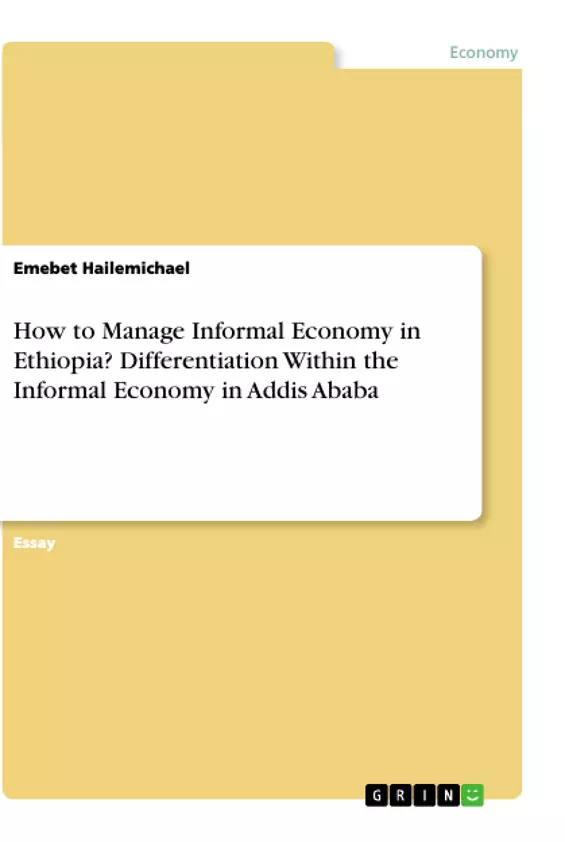This paper look sin to different theoretical and empirical literature concerning the trends of informal economy, segmentation and differentiation within informal economy and ways in which informal economy is segmented, ways of measuring informal economy, and the size and significance of informal economy.
A strong effort is made to get vast recent empirical evidence regarding the size and significance of informal economy and differentiation and segmentation within it in Addis Ababa. Based on this concept, the level of informality in Addis Ababa is measured and informal economy appears to be a vast sector, with low value added and limited innovation and dynamics. In fact, value added has reduced over time. For most, it offers a quality of life far below that of the formal sector.
Inhaltsverzeichnis (Table of Contents)
- Introduction
- Trends of Informal Sector in the World
- Segmentation within the Informal Economy
- Differentiation within Informal Economy
- How Informal Economies are Measured?
- Conclusion
Zielsetzung und Themenschwerpunkte (Objectives and Key Themes)
This review examines the trends, segmentation, and differentiation within the informal economy, exploring methods of measurement and highlighting the size and significance of this sector. The focus is on providing recent empirical evidence regarding the informal economy in Addis Ababa. However, limitations in accessible data pose challenges to achieving a comprehensive understanding of the subject.
- Trends of informality in the global context
- Segmentation of the informal economy based on employment status
- Differentiation within the informal economy in Addis Ababa
- Challenges in measuring the informal economy
- Significance of the informal economy in developing countries
Zusammenfassung der Kapitel (Chapter Summaries)
- Introduction: Provides an overview of the research scope and highlights the challenges in obtaining comprehensive empirical data on the informal economy in Addis Ababa.
- Trends of Informal Sector in the World: Explores the historical evolution of understanding the informal economy, contrasting traditional views with contemporary perspectives. It analyzes the increasing role of the informal sector in both developed and developing countries and its impact on labor markets.
- Segmentation within the Informal Economy: Examines the different categories within informal employment, distinguishing between self-employed individuals and wage workers. It elaborates on the various subcategories within each group, highlighting the diversity of informal work arrangements.
- Differentiation within Informal Economy: Discusses the concept of exclusionary versus voluntary informality in the context of Addis Ababa, analyzing the factors that contribute to each category. It draws on studies that explore the characteristics of informal businesses and their impact on employment and economic participation.
Schlüsselwörter (Keywords)
The primary focus of this review is on understanding the informal economy in Addis Ababa, particularly its size, significance, and differentiation. Key concepts include informal sector, employment status, segmentation, differentiation, exclusionary informality, voluntary informality, and measurement challenges.
- Quote paper
- Emebet Hailemichael (Author), 2019, How to Manage Informal Economy in Ethiopia? Differentiation Within the Informal Economy in Addis Ababa, Munich, GRIN Verlag, https://www.grin.com/document/916263



